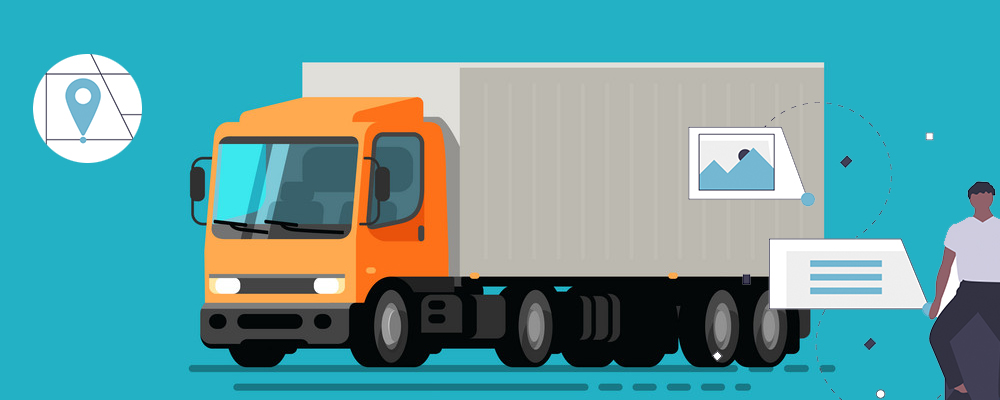
Zapoj CEM for Supply Chain Risk Management
Leaders today need supply chain resilience solutions to quickly assess risks of critical events and offer faster resolutions. From transit to destination, Zapoj CEM creates improved workflows to deliver contextual awareness and offer better visualization of future risks using visual risk intelligence. Zapoj provides integrated essential features to build your resilience. Unsure whether you need a CEM tool? Here, we offer insights into why leaders, stakeholders, or organizations must adopt a CEM platform to tackle supply chain risks.
Supply chain disruptions make it tough to meet customer demand. The inability to ensure fulfillment can damage relations with wholesalers, sellers, retailers, and finally consumers.
Also, far-flung supply chain disruptions are becoming a pressing concern. Apart from the usual operational risks, COVID-19 exposed more of its structural flaws that lead supply chains to disrupt at frequent intervals. It clearly means the supply chain disruptions can impact the manufacturing process, sourcing, and therefore, on-time delivery and customer commitments may take a hit.
Organizations, therefore, need to combat different sources of external shocks with careful planning that helps implement supply chain risk management.
Diverse critical events posing threats to your supply chain operations and their effects.
Supply chain disruptions bring different sections of people to the same platform depending on the effects they have on their bottom line. Critical events preventing the safe transportation of goods are a major hurdle for third-party logistics and those that incur financial losses for the same reason. As reported by Mckinsey & Co. supply chain shocks result in losses of more than 40% of annual profit for companies dealing with moving the goods to the markets as threatened by pandemics, natural disasters, or man-made disasters.
Vulnerabilities from unpredictable storm seasons
 For shippers, transportation providers, or logistics agencies natural disasters are more of a major issue. The traditional hurricane season unleashes as many as 16 hurricanes. As high as it is, there are threats from tropical cyclones, flooding, and wildfires too.
For shippers, transportation providers, or logistics agencies natural disasters are more of a major issue. The traditional hurricane season unleashes as many as 16 hurricanes. As high as it is, there are threats from tropical cyclones, flooding, and wildfires too.
In areas that are most vulnerable, customer supplies can take more than days or weeks to fulfill.
| Note: According to the National Oceanic and Atmospheric Administration, the financial losses from 28 weather and natural disasters amounted to $95 billion between 2018 and 2019. In 2019 alone, the disaster was close to $ 18 billion. |
Supply chain getting stuck between traffic congestions
 Being stuck in traffic does not affect your timeline only- but also it contributes to reputation damage and costs your business thousands of dollars if not millions. Increased traffic means sitting idle in traffic, wasting time, having logistics wasted due to not being able to optimize truck services.
Being stuck in traffic does not affect your timeline only- but also it contributes to reputation damage and costs your business thousands of dollars if not millions. Increased traffic means sitting idle in traffic, wasting time, having logistics wasted due to not being able to optimize truck services.
Pandemic or infectious disease delays logistics
 As soon as COVID -19 outbreak erupted, the supply chain began to shrink. To save borders, ports, and regions from infection transmissions, supply chain routes were restricted. From medical supplies and electronics to consumer goods and essential commodities, everything is vulnerable to disruption. Mckinsey & Co. reported that COVID-19 has resulted in $5 trillion economic losses to supply chain operations.
As soon as COVID -19 outbreak erupted, the supply chain began to shrink. To save borders, ports, and regions from infection transmissions, supply chain routes were restricted. From medical supplies and electronics to consumer goods and essential commodities, everything is vulnerable to disruption. Mckinsey & Co. reported that COVID-19 has resulted in $5 trillion economic losses to supply chain operations.
Supply chain cyber attacks
 Mass ransomware attacks that intrude on the business ecosystem are detrimental to supply chain operations. Third-party software updates, malware, or application installers are the most preferred ways for unscrupulous hackers to breach the sensitive data of vendors and unleash supply chain disruption. According to a study from CrowdSource, cyberattacks cost the supply chain $1.1 of losses on average.
Mass ransomware attacks that intrude on the business ecosystem are detrimental to supply chain operations. Third-party software updates, malware, or application installers are the most preferred ways for unscrupulous hackers to breach the sensitive data of vendors and unleash supply chain disruption. According to a study from CrowdSource, cyberattacks cost the supply chain $1.1 of losses on average.
Looming strikes, labor unrest, or widespread protests increase supply chain risks
Not but not least, man-made disasters are one of the key reasons why supply chain risks are on the rise. With major supplies being restricted for transfer, political unrest and  other issues decrease capacity and disrupt commerce.
other issues decrease capacity and disrupt commerce.
Business impacts of supply chain disruptions
Supply chain disruptions hurt the company’s bottom line and there are ways in which companies suffer huge financial losses including other setbacks.
- Waste of inventory - one thing is clear when the supply chain cannot reach its destination, inventory lies unused or stocked up in the warehouse. More so, due to the pandemic, companies are shoring up more inventories to tackle unforeseen changes than they need. It amounts to millions of dollars of value that tie up huge capital for organizations and for the worst-case scenario in case if customers do not purchase, inventory wastes become more glaring.
- Revenue loss - Lost revenue is nothing new - it is a common factor of supply chain disruptions. In addition to this, losing customers is also quite obvious. Orders are being hit due to disruptions that cause customer dissatisfaction.
- Fines and penalties- as organizations miss logistics delivery, they are prone to paying fines and penalties due to losses they cause to their distributors, retailers, or stakeholders.
- Compromised customer experience - not only companies pay for delayed deliveries or service, but also they are held accountable for not meeting customer demand. Suppliers, manufacturers, stakeholders, and even customer satisfaction levels dip down, which inadvertently make the brand experience poor, insinuate mistrust and impact customer loyalty.
When threats are diverse and tough to mitigate, organizations need to build resilience into supply chain management. CEM platforms like Zapoj are more dynamic and scalable to offer supply chain risk management. Let’s work your way through it with Zapoj.
Zapoj CEM can address supply chains disruptions
Risk intelligence and visibility into logistics
Shipping to customers requires you to monitor a large number of logistics assets. Shipping carriers, inventories at the warehouse or facilities, and employees - all collaborate to accomplish smooth functionalities of supply chain operations. Detecting vulnerabilities or chokepoints to all your assets keep you ahead of the risk, which you can achieve by using visual risk intelligence. 
Zapoj visual risk intelligence harnesses risk data in real-time to allow you to embed them in your supply chain map. This real-time on-field feed is phenomenal in identifying what threats your supply chain or logistics may come across. With risk monitoring capabilities, you know what’s at risk -
- If your transport networks could face unprecedented strikes?
- Adverse weather or terror activity impedes supply chain
- Sudden port or border closedown aggravated by pandemic interrupts operations
This is by far the most efficient way to know which routes, employees, shipments or transport networks, or inventory could be at risk.
Lower overall risks by sourcing alternative methods
So risk intelligence guides you on how to prepare your shipment from the point you identify potential threats so that you can avoid major delays and disruptions.
- Enable employee and facility safety - Using risk visualization capabilities, stakeholders or partners can launch immediate collaboration and communication with the crisis response team. No matter where the team is, it takes no time to plan out risk mitigation strategies with immediate effect that explain ways to prevent losses by shifting vulnerable employees or production to a much safer environment. The act ensures employee safety so employee productivity continues to keep up with enough production and help meet consumer demand.
- Identify alternative logistics routes - it is critical for crisis response teams to discuss with their stakeholders the way out to avoid shipping delays or mitigate disruptions.
- The location intelligence embedded in Zapoj relays real-time data on threat potential on carriers or supply chain networks on the transit.
- Risk intelligence helps them identify future risk conditions and predict the evolving situations with changing times. As they achieve situational awareness of the situation, they can identify alternative routes as the next step to prevent vulnerabilities and also losses.
p is to deliver real-time information to store managers, staff, or incident responders. With Zapoj offering so many ways to connect and c
Delivering critical communications to act on supply chain risks

As organizations determine and validate the best approach in lowering the risk to the supply chain, the critical steommunicate with a crisis response team and to instruct them with an audit trail, it accelerates the process of risk mitigation.
- Emergency alerting or mass notification capabilities keep them informed of the ongoing situations and help them initiate recovery efforts.
- A two-way communication channel delivers messages to the right person via a number of channels - voice calls, SMS, fax, social media notifications, emails among others until it confirms the receipt of a message.
- Also, pre-built message templates deliver fast messages and reduce the time to respond.
Assess mistakes to improve risk preparedness
Analyze what failures you confronted as you make efforts to fight supply chain disruptions. Review your risk preparedness efforts by collecting data from Zapoj and assess them with your team. Provide communication audits to suppliers, employees, stakeholders to identify loopholes in your recovery plans and reestablish them in line with possible threat scopes.
Zapoj builds resilience into your supply chain

Zapoj CEM platform, Zapoj provides real-time mapping capabilities fortified with location intelligence and visual risk intelligence. Building your supply chain recovery plan with Zapoj enables you to identify threats and vulnerabilities, meaning you are able to detect their potential impacts on your supply chain. Therefore, your response team reacts faster to supply chain risks or prevents them before they leave your logistics entirely paralyzed. With faster reaction times, your staff gains an added advantage to mitigate supply chain disruptions, ensure the return to operations quicker, and bring back the efforts that protect your revenues.
So, with your logistics ensuring timely delivery of the shipment, you can maintain customer commitments, elevate their user experience, and build their trust in your service all over again. Simultaneously, inventory waste is less likely to happen with on-time logistics deliveries. As Zapoj ensures supply chain resilience, you can better optimize the work hours of truck drivers, reduce the cost related to excessive fuel expenses wasted due to failed deliveries, and improve the efficiency of overall logistics and supply chain operations.
Leverage Zapoj to improve visibility into your supply chain operations round the clock and reinstate lost profits. Need help with employing Zapoj in your supply chain systems? Request a demo or call us today.
Are youprepared to handle critical events? Signup for free
If you intersted to follow our blogs : Subscribe
